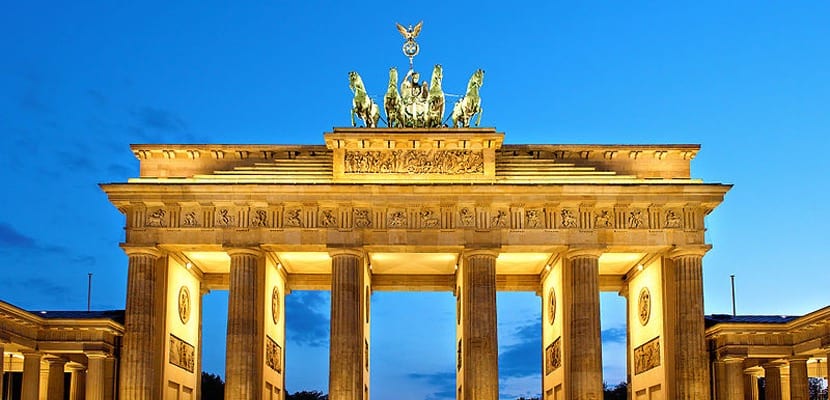
One of the main icons of Berlin is the famous Brandenburg Gate, a symbol of the triumph of peace over arms and the ancient gateway to the city. It was built at the end of the 17th century during the reign of Frederick William II of Prussia, who also ordered the erection of another XNUMX doors that gave access to the center of Berlin, this being the most monumental of the set.
Today it is one of the most visited and photographed monuments in Germany. With her, Berliners gather to celebrate major events and events as well as countless tourists to take the most representative photograph of their trip to the German capital. This is all you need to know about the Brandenburg Gate, the most popular landmark in Germany.
Origins of the Brandenburg Gate
It was built by the architect Carl Gotthard Langhans between 1788 and 1791, who gave it an appearance reminiscent of the great Roman triumphal arches. At this time the prevailing artistic style was Neoclassicism and Prussia wanted to show its power to all of Europe with this monument.
In fact, the Brandenburg Gate was a symbol of victory and under its arches the elites of the city passed as members of royalty, troops and parades.
Characteristics of the Brandenburg Gate
Of the monumental complex, it stands out its height, 26 meters, and the 5 meter high sculpture that crowns the door that represents a chariot drawn by four horses and led by the goddess of Victory riding towards Berlin.
This sculpture created by the artist Johann Gottfried Schadow astonished Napoleon Bonaparte when he entered Berlin in 1806, so he decided to take it as a war trophy to Paris. However, when the French emperor fell from grace in 1814, the sculpture returned to Berlin.
The statue that can be seen today on the Brandenburg Gate is a copy made in West Berlin in 1969, as the original was destroyed during World War II.

Destruction of the Brandenburg Gate
The outbreak of World War II caused severe damage to the structure and sculpture of the Brandenburg Gate. Later, in 1956, the occupation forces collaborated to rebuild it, but due to the construction of the Berlin Wall in 1961, the monument was left in no man's land, trapped between west and east with hardly anyone having access to it.
In 1989, East and West Germany were reunited. A union materialized in this monumental gate, which had lost its function during the years separated by the famous Berlin Wall. After the reunification of the city, the Brandenburg Gate regained its rightful place in Berlin's history.
Location of the Brandenburg Gate
Until 1814 the place where the Brandenburg Gate is located was known as Viereck (the square) but after the fall of the Napoleonic troops it was renamed Pariser Platz (Paris Square). It was the largest square in Berlin and the victorious troops of Germany marched through it, from the Hohenzollerns to the German Democratic Republic.
At the end of the Second World War the bombardments destroyed the buildings in the square, leaving only the Brandenburg Gate standing. After the conflict, the Berlin Wall was built, which ended up destroying the Pariser Platz and on the occasion of the German reunification in the 90s it was decided to rebuild the Paris Square, to form the perfect architectural ensemble that accompanies the Brandenburg Gate.